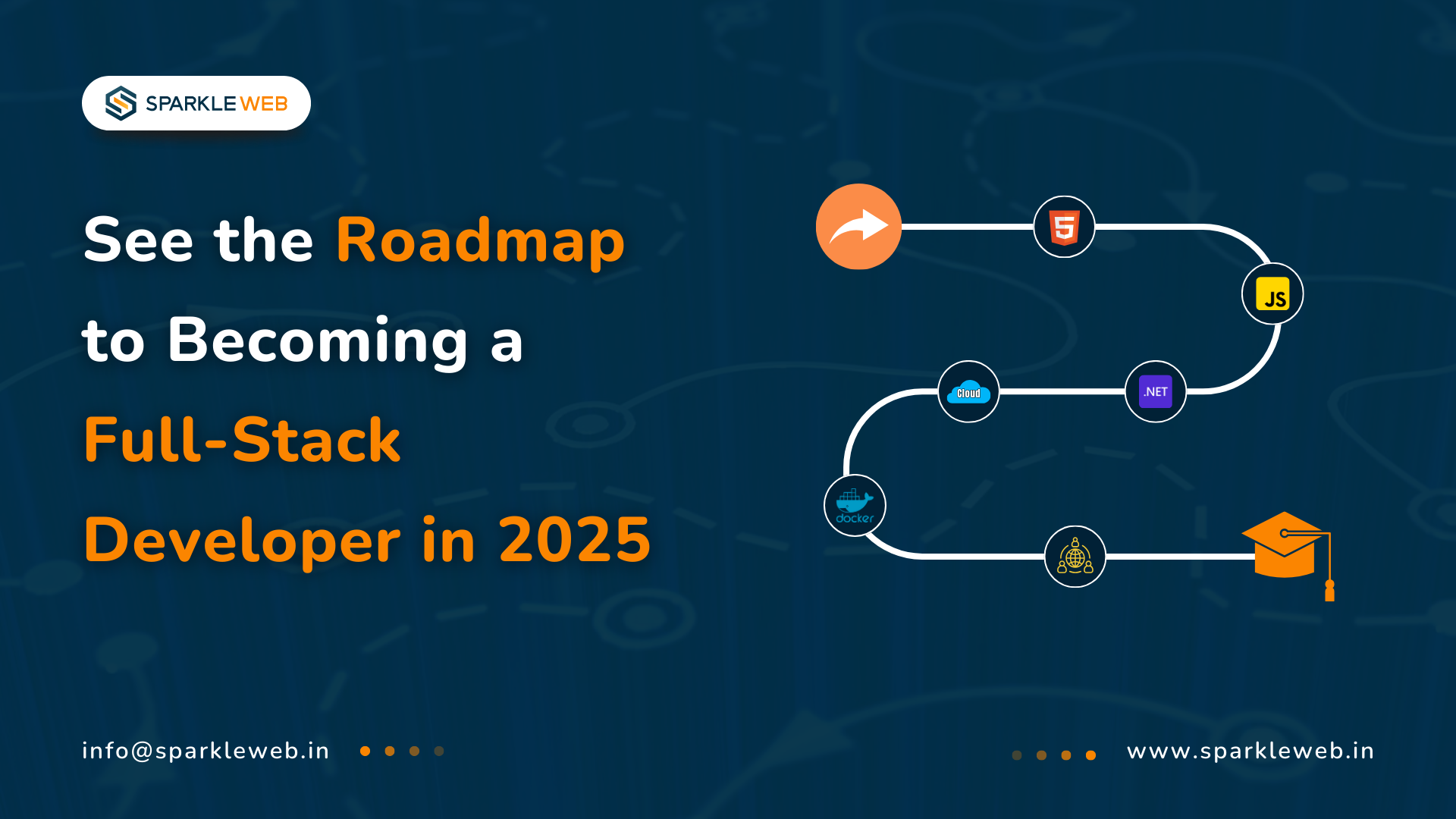Why Should You Become a Full-Stack Developer in 2025?
1. Full-Stack Developers Are in High Demand
2. Full-Stack Developers Earn High Salaries
-
The average salary of a full-stack developer in the United States is $120,000+ per year.
-
If you have expertise in modern frameworks, cloud computing, and DevOps, you can earn even more.
- Even in other countries, full-stack developers earn competitive salaries compared to other tech jobs.
3. You Get More Career Opportunities
-
In startups (where companies prefer multi-skilled developers)
-
In big tech companies (where full-stack developers handle multiple technologies)
- As a freelancer (where you can build websites and applications for clients)
- As an entrepreneur (if you want to build your web applications or products)
4. You Gain More Flexibility in Your Work
Step-by-Step Guide to Becoming a Full-Stack Developer in 2025
Step 1: Learn the Basics of Web Development
A. Learn a Programming Language
-
Variables (storing data)
-
Data types (numbers, strings, arrays, objects)
- Loops & conditionals (for and while loops, if-else conditions)
- Functions (reusable code blocks)
-
Object-Oriented Programming (OOP) (classes and objects)
B. Learn HTML & CSS
-
HTML (HyperText Markup Language): Defines the structure of web pages.
-
CSS (Cascading Style Sheets): Styles and designs the web pages (colors, fonts, layouts).
Step 2: Master Frontend Development
A. Learn JavaScript in Depth
- Learn modern JavaScript (ES6+ features) like:
-
- Arrow functions
- Promises & async/await
- Destructuring and template literals
- Understand DOM (Document Object Model) manipulation to update webpage elements dynamically.
B. Learn a Frontend Framework
-
React.js – Most popular, component-based, supported by a large community.
-
Vue.js – Lightweight, beginner-friendly, and great for quick development.
- Angular – Used in large enterprise applications, includes powerful features.
C. Learn CSS Frameworks
-
Bootstrap – Pre-built CSS components for faster styling.
-
Tailwind CSS – Utility-based CSS framework for highly customizable designs.
D. Learn Git and Version Control
-
Git helps track code changes and collaborate with teams.
-
Learn basic Git commands (commit, push, pull, branch).
- Use GitHub or GitLab to store your projects.
Step 3: Learn Backend Development
A. Choose a Backend Language
-
Node.js (JavaScript-based, widely used)
-
Python (Django or Flask for backend development)
- Ruby (Ruby on Rails for rapid development)
- Java (Spring Boot for enterprise-level applications)
B. Learn Databases
-
SQL Databases – PostgreSQL, MySQL (for structured data)
-
NoSQL Databases – MongoDB (for flexible, document-based storage)
C. Work with APIs
-
Learn to build RESTful APIs (APIs that help applications communicate).
-
Explore GraphQL (a flexible alternative to REST).
D. Understand Security & Authentication
-
Use JWT or OAuth for user authentication.
-
Learn web security best practices to prevent cyber threats.
Step 4: Connect Frontend and Backend
-
A blog website where users can write, edit, and delete posts.
-
A to-do app with authentication and database storage.
- A simple e-commerce website with product listings and cart functionality.
Step 5: Learn DevOps Basics
A. Understand Hosting and Deployment
-
Use platforms like Heroku, Netlify, or Vercel for deployment.
-
Learn containerization with Docker.
B. Continuous Integration/Continuous Deployment (CI/CD)
- Explore tools like Jenkins, Travis CI, or GitHub Actions.
C. Cloud Services
- Familiarize yourself with AWS, Google Cloud Platform, or Azure.
Step 6: Stay Updated and Practice
A. Keep Learning
-
Follow blogs, tutorials, and online courses.
-
Stay updated with the latest tools and frameworks.
B. Build Real-World Projects
-
Create a portfolio showcasing your skills.
-
Contribute to open-source projects.
C. Network and Collaborate
-
Attend meetups, hackathons, and webinars.
-
Collaborate with other developers to learn and grow.
Tools and Resources
Online Learning Platforms
Practice Platforms
Communities
Start Your Full-Stack Journey with us!
Conclusion: Why Full-Stack Development is a Future-Proof Career?
-
By 2025, 85% of web applications will require full-stack expertise.
-
Companies prefer full-stack developers for cost-efficiency and versatility.
- With AI and automation, full-stack developers will play a crucial role in integrating machine learning with modern applications.
Follow Sparkle Web for more industry insights!



Vikas Mishra
A highly skilled Angular & React Js Developer. Committed to delivering efficient, high-quality solutions by simplifying complex projects with technical expertise and innovative thinking.
Reply